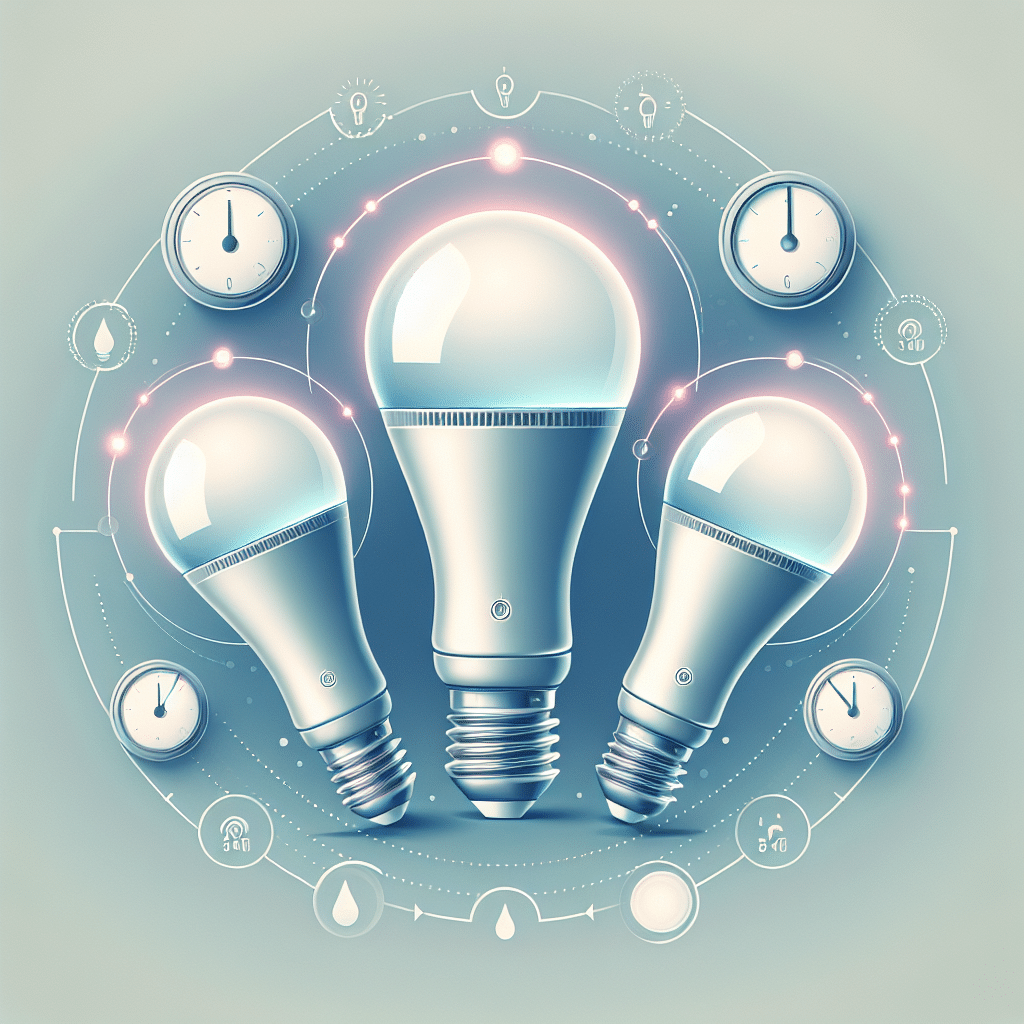What Are Smart Bulbs with Schedule Timers?
Smart bulbs equipped with schedule timers are part of the advanced home automation systems that allow users to control their lighting through apps, voice commands, or preset schedules. These energy-efficient LED bulbs connect to Wi-Fi or Bluetooth networks and can be programmed to turn on or off at specific times, offering convenience and enhanced control over your home’s illumination.
Benefits of Using Smart Bulbs
1. Energy Efficiency
Smart bulbs consume significantly less power compared to traditional incandescent bulbs. By using schedule timers, you can reduce energy consumption even further by ensuring lights are only on when needed.
2. Enhanced Security
Automating lighting schedules can enhance your home security. For instance, you can program your lights to mimic your living habits, making it appear as if someone is home even when you are away.
3. Convenience and Control
With digital timers and mobile apps, users can remotely control the lighting in their homes. Whether you’re on your way home after a long day or just settling in for the night, you can ensure your home is well-lit when you arrive.
4. Customization
Smart bulbs allow for customization of colors and brightness levels. You can create scenes for various activities, whether it’s a cozy evening or a vibrant gathering with friends.
Features of Smart Bulbs with Timers
1. Remote Access
Most smart bulb systems are equipped with remote access functionalities. Through mobile applications, users can control lighting from anywhere, providing ultimate flexibility and control.
2. Compatibility with Smart Home Ecosystems
Modern smart bulbs integrate seamlessly with various smart home ecosystems like Amazon Alexa, Google Assistant, and Apple HomeKit. This interoperability allows users to control their bulbs using voice commands.
3. Color Changing Capabilities
Many smart bulbs come with RGB features, enabling users to adjust the color to suit their mood or season. Schedule timers can even be set to change colors at different times of the day.
4. Light Dimming
Dimming functionalities add another layer of versatility. Users can set the intensity of their lights in conjunction with scheduled timers, adjusting brightness according to the time of day.
How to Set Up Smart Bulbs with Schedule Timers
1. Choose the Right Bulb
The first step is to select the correct smart bulb that fits your needs in terms of brightness, color options, and smart features. Check compatibility with your existing smart home devices.
2. Installation
Installing smart bulbs is as simple as replacing your regular light bulb. Ensure your lamp or ceiling fixture is powered off before installation.
3. Download the App
Install the corresponding mobile app for your smart bulb. Most brands like Philips Hue or Wyze provide user-friendly apps for easy operation.
4. Connect to Wi-Fi
Follow the instructions in the app to connect your smart bulb to your home’s Wi-Fi network. Ensure you’re connected to a 2.4 GHz network since most smart devices operate on this frequency.
5. Set Up Schedule Timers
Access the scheduling features through the app. You can usually set multiple schedules for each bulb, determining unique on/off times, which can differ by day.
6. Automation and Scenes
Explore automation features that can trigger your lights based on various factors like location (when you arrive or leave home) or time of day. You can also create scenes that customize light settings for different occasions.
Popular Brands and Models
1. Philips Hue
Philips Hue is a market leader, offering an array of smart bulbs with extensive scheduling features. With the Hue Bridge, you can connect multiple bulbs and control them via the app or voice command.
2. LIFX
LIFX bulbs are known for their vibrant color display and do not require a hub. Easy app control allows for setting complex schedules and automations.
3. TP-Link Kasa
Kasa smart bulbs are budget-friendly and offer straightforward setup procedures. Their mobile app facilitates scheduling and control while seamlessly integrating with Alexa and Google Assistant.
4. Wyze Bulbs
Wyze provides affordable options without sacrificing quality. Users enjoy customization and schedule functionalities through an intuitive app.
Troubleshooting Common Issues
1. Connection Problems
If your smart bulb won’t connect to Wi-Fi, ensure the bulb is within range of your router and that your network isn’t overloaded.
2. App Glitches
Occasionally, the mobile app may become unresponsive. Restart the app or reinstall it if issues persist.
3. Timer Functions Not Working
If scheduled timers are not functioning, double-check that you’ve saved all settings correctly and consult the app’s help section for troubleshooting tips.
Future of Smart Bulbs
As technology advances, we can expect smart bulbs to become even more integral to smart home systems. Upcoming features may include enhanced AI capabilities that learn user habits, allowing for even smarter scheduling and energy management. Additionally, the integration of smart bulbs with other home systems will offer unprecedented convenience.
Conclusion
By employing smart bulbs with schedule timers, homeowners can benefit from energy efficiency, enhanced security, and seamless integration into their lives. With features that boost convenience and personalization, these innovative lighting solutions mark a new era in home automation. Whether you prioritize aesthetics or functionality, there’s a smart bulb out there tailored for your specific requirements. Transitioning to smart bulbs opens the door to a smarter, more connected, and energy-efficient lifestyle.
